News and Events
CWC Team Prepares for Competition
May 2021
The Cal Maritime Collegiate Wind Team is barreling toward the finish of a long and productive year as they prepare for the Virtual Collegiate Wind Competition which will take place June 2-11.
The Turbine Design Team has finished building and testing their turbine. The turbine, based on and modified from the variable pitch design of 2020, was tested in the Cal Maritime wind tunnel on May 13 according to the US Department of Energy rules. It has a variable pitch rotor with a custom-made axial flux generator and a fixed resistive load with a battery connect to start up after braking. The turbine started up at 3 m/s, made 38 W at 11 m/s, controlled power with some moderate fluctuations at 12 and 13 m/s, shut down manually, and survived durability. The load disconnect test failed. Their score was 157.8 points which would rate them among some of the best prior year performances. The team also submitted a 20 page detailed of their report, documenting the ‘what’, ‘why’, and ‘how’ aspects of their designs in detail. The team will present their design and video of their turbine test virtually on June 7. The full 30 minutes test video can be viewed HERE.
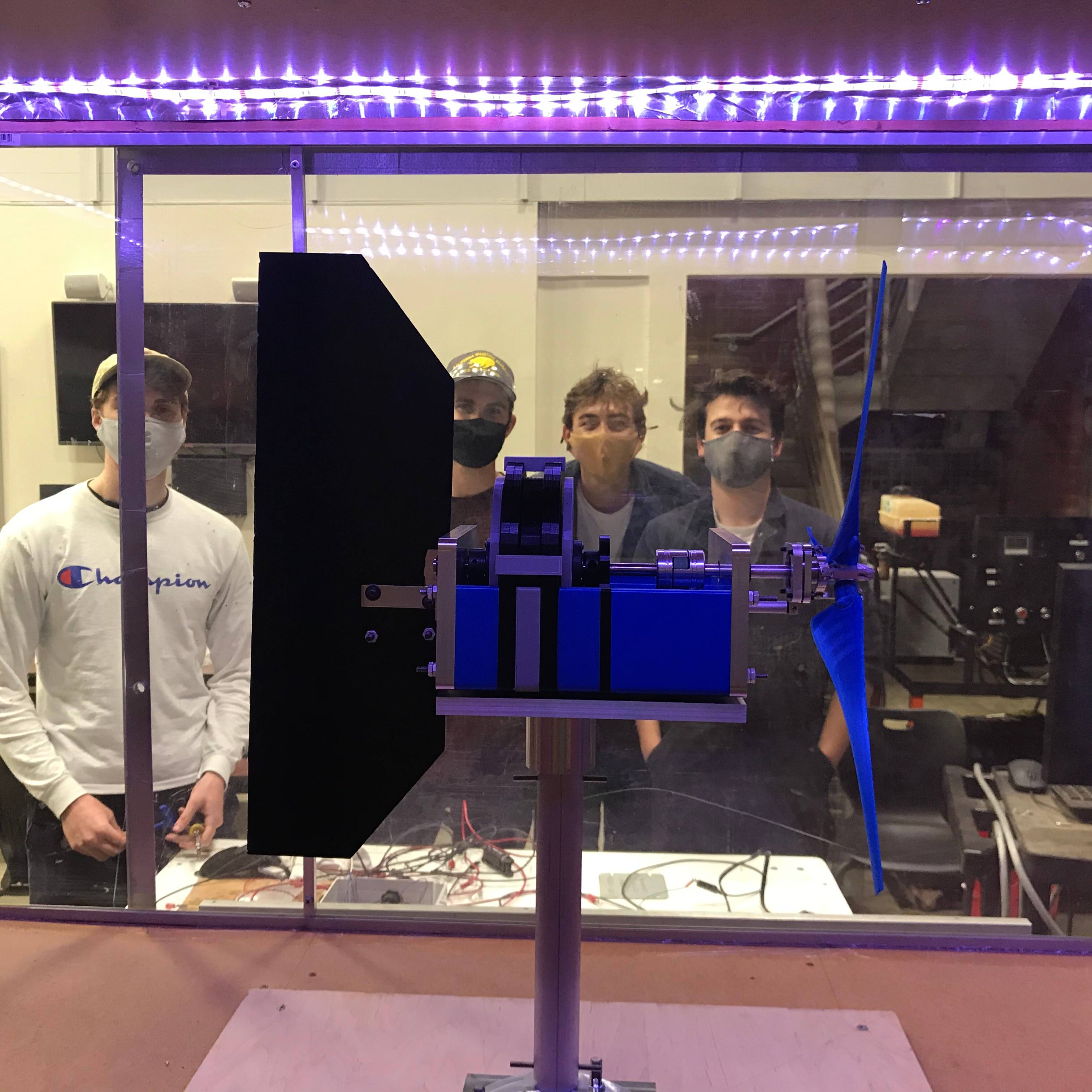
Meanwhile, the Project Development Team completed their design of a 100 MW wind farm in western South Dakota. They chose a site in Pennington County with high wind resource, access to transmission lines, and with great potential to benefit economically from wind energy. They used OpenWind software to site 22 x 4.5 MW Siemens-Gamesa wind turbines along a roughly west – east ridge. They considered land access, wildlife protection, permitting, visual impacts, and economic development. Their financial analysis, which included capital, financial, operation and maintenance and other variable costs, showed that over the 25-year life cycle of the project, it will cost $26.1 to produce a MWh of electricity. Since they can sell this electricity to a utility at about $50/MWh, this should be a financially feasible project. They have submitted their 20 page report documenting the details of this project plan, and will present this on June 2.
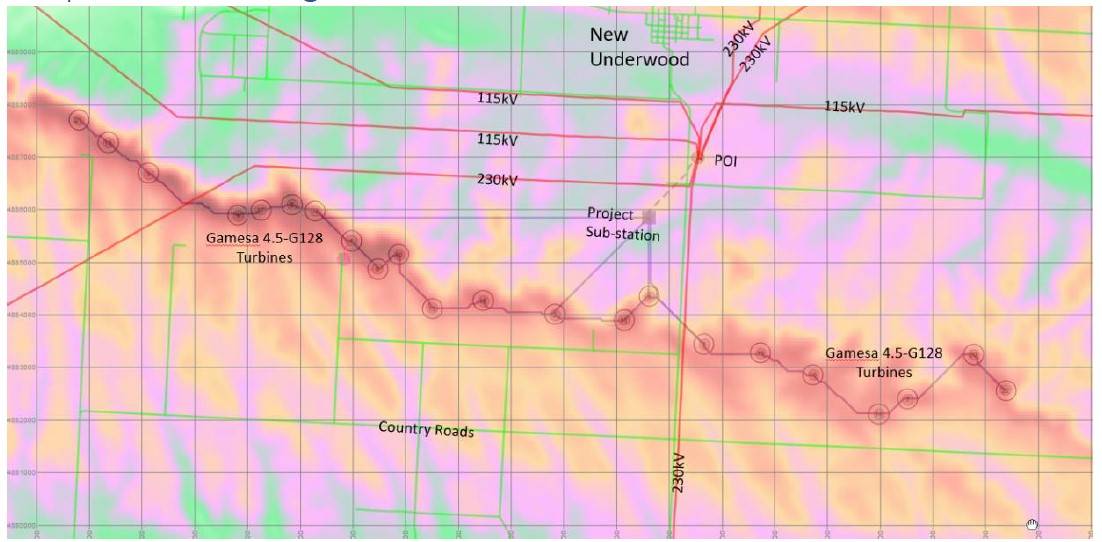
In addition, the teams are preparing a presentation of their “Connection Creation” task, which includes the outreach, career development, and communications aspects of the project. This includes the outreach activity that was described in a previous story and their interviews with four wind industry professionals to learn about careers in the wind industry. This presentation will also occur on June 2.
If you would like to watch the student presentations, please email Tom Nordenholz (tnordenholz@csum.edu) or Ryan Storz (rstorz@csum.edu) and they will send you a link to attend as a guest.
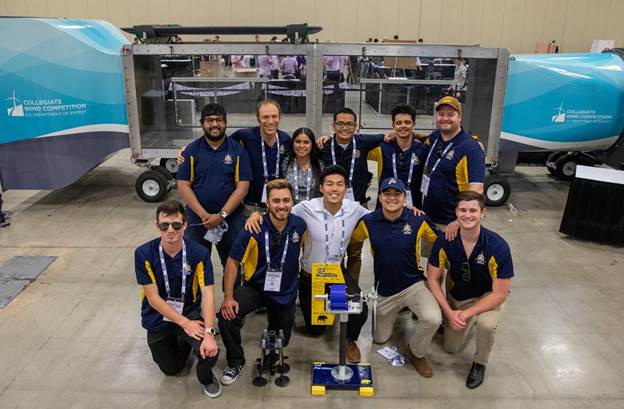
Cal Maritime Captures the Breeze at the 2022 Collegiate Wind Competition
Cal Maritime had a fantastic week at the 2022 US Department of Energy Collegiate Wind Competition (CWC), finishing fourth overall, making many connections in the US Offshore Wind Industry, and, overall, just enjoying the in-person event after a two-year hiatus....
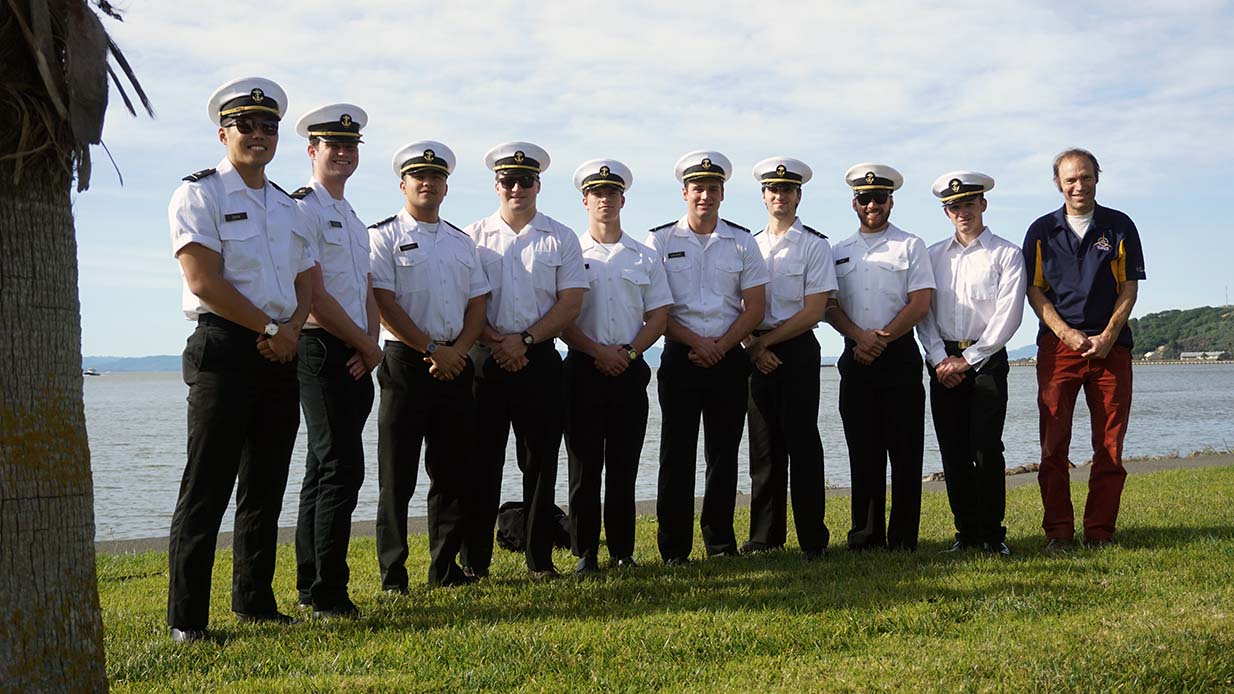
Collegiate Wind Team Works on New Tasks as the Competition Focus Shifts to Offshore Wind
In this uncertain year in these uncertain times, The US Department of Energy Collegiate Wind Competition organizers have focused this year's competition on the most promising and emerging area of wind energy - offshore wind....
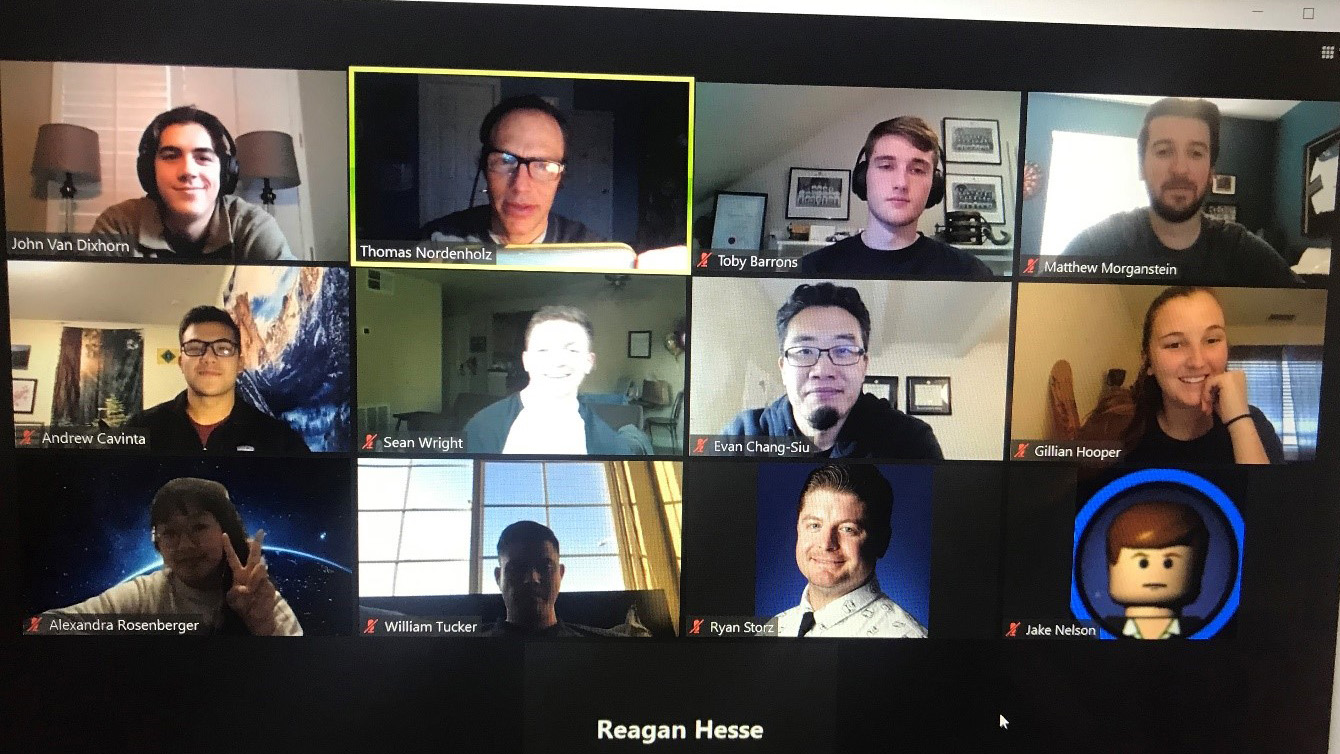
Cal Maritime Wind Program Keeps on Spinning
Cal Maritime has been chosen by the US Department of Energy to compete in its ninth consecutive Collegiate Wind Competition in the 2021-2022 academic year....
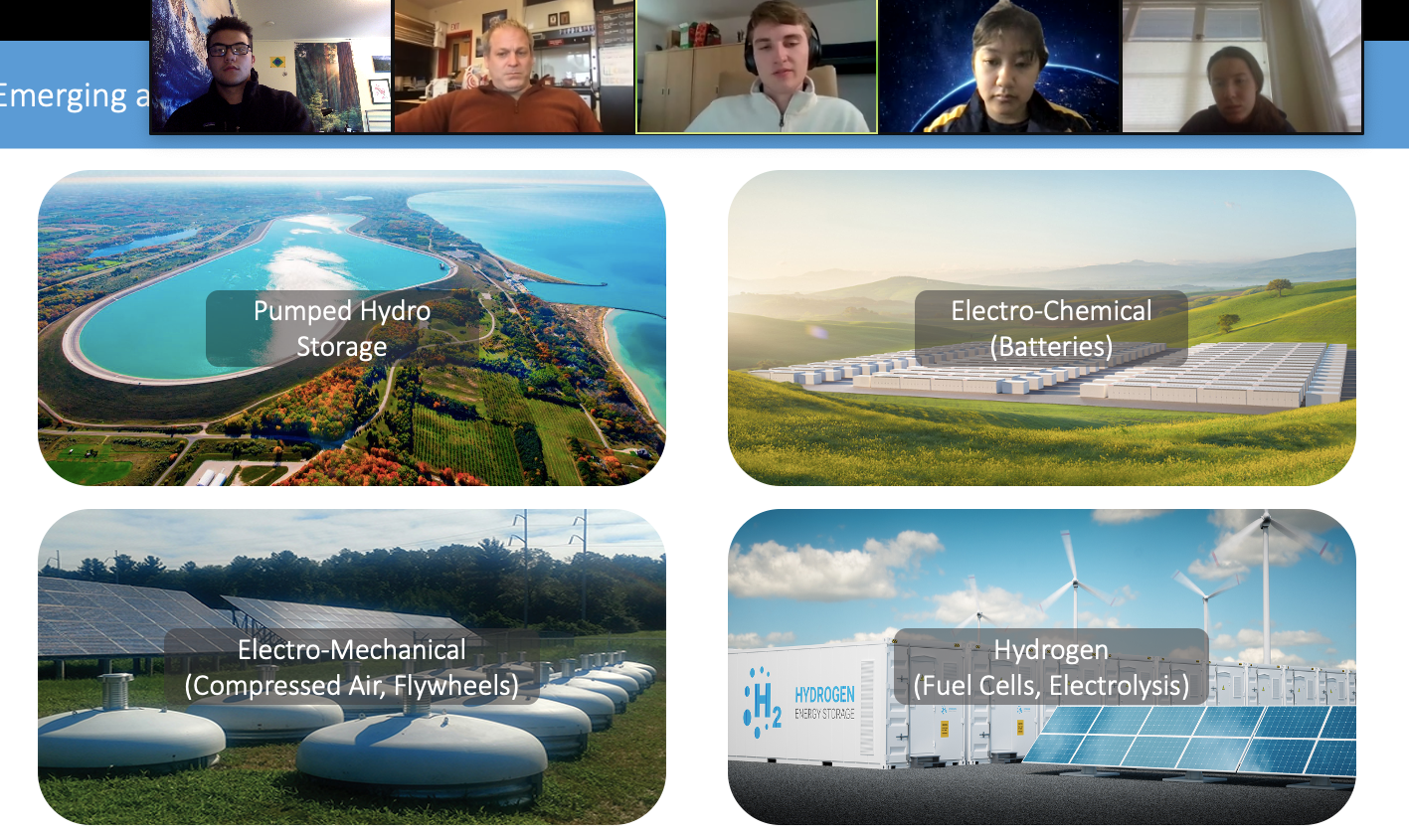 CWC Team Teaches High Schoolers About Wind
CWC Team Teaches High Schoolers About Wind
March 2021
Isolated from the isolated world by the pandemic, and unable to hold their usual Kidwind Wind Turbine Design Challenge, this year’s team still found another meaningful way to connect to schools – they decided to give virtual presentations to high school classes on wind energy.
The team’s nine members collaborated online to make a presentation that included:
- Wind energy, its benefits and its current and future growth trajectories
- Some state federal policies that are helping to drive this growth
- A description of how wind turbines work
- Offshore wind and its potential for growth
- Energy Storage Technology and its role in renewable energy
- An introduction to Cal Maritime and The Collegiate Wind Competition.
Then, the team split into 4 groups of 2 to 3 to give the virtual presentations to the following four high school Environmental Science Classes:
- Vallejo MIT Academy (2 classes)
- Albany High School
- San Clemente High School
Going into the presentations, the team was a little concerned on the possible effect of “zoom fatigue”. On the contrary, attendance and interest was very high. High school students asked great questions. The team wishes them the best as they make their college plans and hopes that they too will join the green revolution.